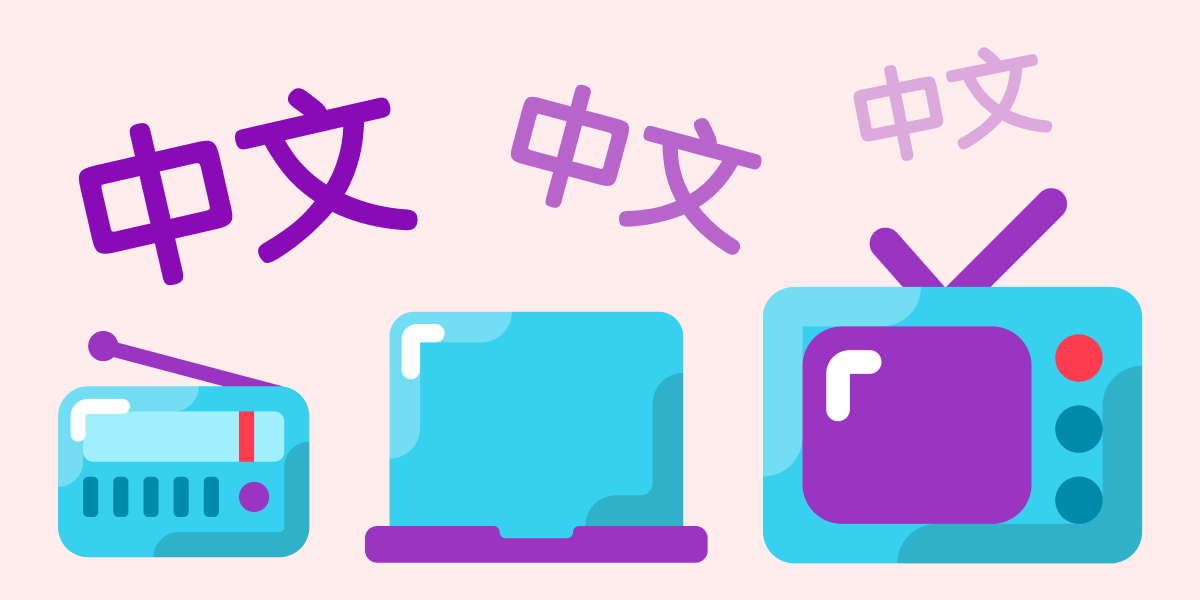Help! I cannot hear the difference between tones in Chinese
Have you ever struggled with hearing the difference between tones in Mandarin Chinese?
Do they all sound the same to you?
You’re not alone!
As a tonal language, Mandarin Chinese can be tricky for learners who are not used to distinguishing between different pitches in their native language.
TIP
Tones are challenging for almost everyone learning Chinese, because, unlike Chinese, most of the world’s languages do NOT contain tones.
And - despite its name - tones in Chinese are completely different from musical tones. As I’ve explained in this article, even if you think you are musically tone deaf, you CAN still pick up Chinese tones!
Here are several tried-and-tested ways to improve your tone recognition skills.
1. Listen more intentionally
Start by listening carefully to native speakers and paying attention to the way they pronounce different words. Try to focus on the pitch of each syllable and listen for subtle changes in tone.
This is easier said than done. Native speakers often talk at a very rapid clip, and initially, there will be many instances when you can’t understand a single thing.
Don’t give up! Just focus on paying attention of the rhythm of the sentence. Sometimes, you can make out short phrases and utterances, and when that happens, listen to how the pitch changes.
Over time, you’ll find that certain sounds and combinations keep repeating themselves, and before you know it, you’ll develop a keen sense for tones and a familiarity with the sounds that make up Chinese.
2. Mimic what you hear
Another helpful technique is to practice mimicking the sounds you hear.
Start with individual words. Listen to audio recordings of native speakers say those words, and then repeat them out loud yourself. Make sure to pay special attention to the pitch and tone of each syllable.
To take things one step further, record yourself saying these words, and then play back the recording, comparing them to the pronunciation of the native speaker.
This exercise can be remarkably effective. Start with words, then move on to phrases, and finally complete sentences.
Extra Practice
I’ve created several lists of vocabulary complete with audio recordings for you to practice your tones.
3. Immerse yourself in a Chinese-speaking environment (YouTube works too)
The more repeated exposure you get to the sounds of Chinese, the better your ears will be at picking up the tones. This is similar to how young kids learn Chinese.
Not everyone can pack up their lives and move to China or Taiwan right away — the alternative is to consume as much Chinese-speaking media as you can, through YouTube, TV shows or podcasts.
You can also try listening to Chinese music or watching Chinese movies with subtitles to get a better feel for the way tones are used in natural speech.
4. Practice with an app
Seek out mobile apps that offer targeted practice on tones. If you have an iPhone or an iPad, a great option is the Ka Chinese Tones app, but other alternatives also exist — just search on the app store for “learn Chinese tones”.
Many of these apps are free to use, and offer bite-sized practice sessions for you to get exposure to Chinese tones. Whenever you have some downtime during your day, you can start a practice session to get some ear training in.
Another advantage is that these apps often incorporate gamification elements, which helps keep you motivated. Learning tones can often be a boring and dreary affair, but when you feel like you’re playing a game and trying to make progress at it, it becomes way more fun!
TIP
Mobile apps can help you practice tones and have fun doing so.
5. Don’t be afraid to ask for help
Finally, don’t be afraid to ask for help from native speakers or language tutors. They can provide valuable feedback and help you fine-tune your tone recognition skills.
Many native Chinese speakers are extremely patient with foreigners who are trying to learn their language. So when you ask them to repeat something slowly, or to help you correct your pronunciation, they’ll often be smiling and happy to do so.
Don’t overthink it! Tones are hard — but it’s a challenge that you should embrace!
I’m biased, but if you’re looking for a fun and effective way to learn and practice Mandarin Chinese tones, I recommend giving the Ka Chinese Tones app a try.
Ka is a free app that focuses specifically on tone recognition and practice exercises. With its engaging games and exercises, Ka makes learning tones feel like a fun challenge rather than a tedious task.
Whether you’re just starting out or looking to improve your existing skills, Ka is a fantastic tool for mastering Mandarin Chinese tones. So why not give it a try and take your language skills to the next level?
 Kai Loh
Kai Loh






